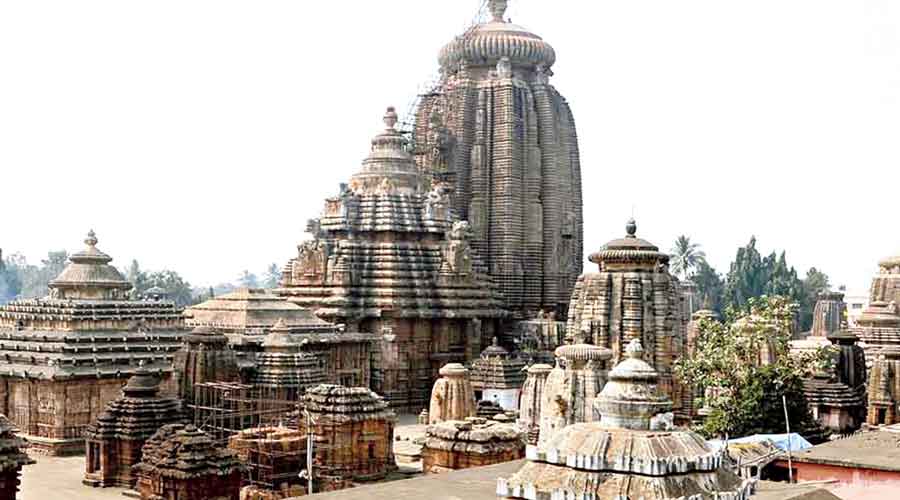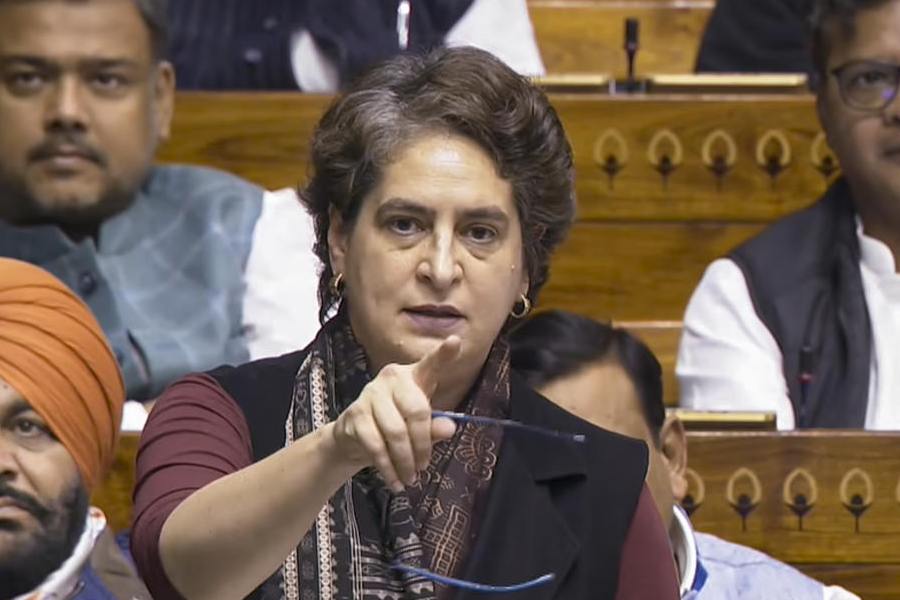The ruling Biju Janata Dal (BJD) on Wednesday accused the Centre of adopting double standards while clearing projects under the Ancient Monuments and Archaeological Sites and Remains (AMASR) Act, which prohibits new construction within 100 metres of a protected monument.
The BJD’s reaction follows the Centre’s objection to an Odisha government ordinance that aims to make peripheral development around the 11th century Lingaraj Temple in Bhubaneswar and bring changes in its administrative structure.
The BJP maintains that developmental activities should take place in accordance with the law.
“The Centre has raised a few objections to the ordinance on the Lingaraj Temple. We had earlier clarified each point of the ordinance to the Centre through video-conferencing twice,” local MLA (Bhubaneswar-Ekamra Assembly constituency) and state science and technology minister Ashok Chandra Panda told The Telegraph.
Accusing the Centre of adopting double standards, the minister said: “We need to know whether the AMASR Act were properly adhered to when construction was being carried out at the Kashi Vishwanath temple (in Uttar Pradesh), Somnath Temple (in Gujarat) and Kedarnath Temple (in Uttarakhand). But when we are carrying out developmental activities, why is a different set of rules being adopted? Sending objections to the state government’s plan through the governor’s office now is unfortunate.”
The ordinance, approved by the Odisha government in 2020, aims to govern the Lingaraj Temple complex with a separate law akin to that of the Shree Jagannath Temple in Puri.
At present, the Lingaraj Temple is governed by the Odisha Hindu Religious Endowment Act, 1951.
In the ordinance, the state government had proposed to bring the Lingaraj Temple and eight other shrines under the control and supervision of a 15-member committee with a senior Hindu IAS officer as its administrator like that of Shree Jagannath Temple. It had also started beautification work around the shrine.
However, the Centre maintained that the protected monuments and the centrally protected tanks in the Lingaraj Temple complex governed by the AMASR Act had been brought under the control of the Odihsa government’s ordinance and “a dual authority would result in continuous conflict”.
The Centre has also raised objections to various constructions near the shrine. It has cited that as per the AMASR Act, new construction is prohibited within 100 metres of a protected monument and the area within 200 metres of a monument is known as regulated zone. The Archaeological Survey of India is responsible for conservation and preservation of all the sites. “Certain clauses of the ordinance also relate to the conservation and repair of the temples and tanks. Such conflict is not in the interests of maintaining these centrally protected monuments in their original form for posterity. As such, the dual administrative authorities will result in continuous conflict…” the Centre said.
The Centre had forwarded its objection to the governor who sent it to the state government seeking clarification. “We will comply with every point,” a senior official said.
State BJP president Samir Mohanty said: “There is no politics in it. We have a set of laws and we need to adhere to them. No one objects to any developmental work but all the parameters of law need to be followed.”










